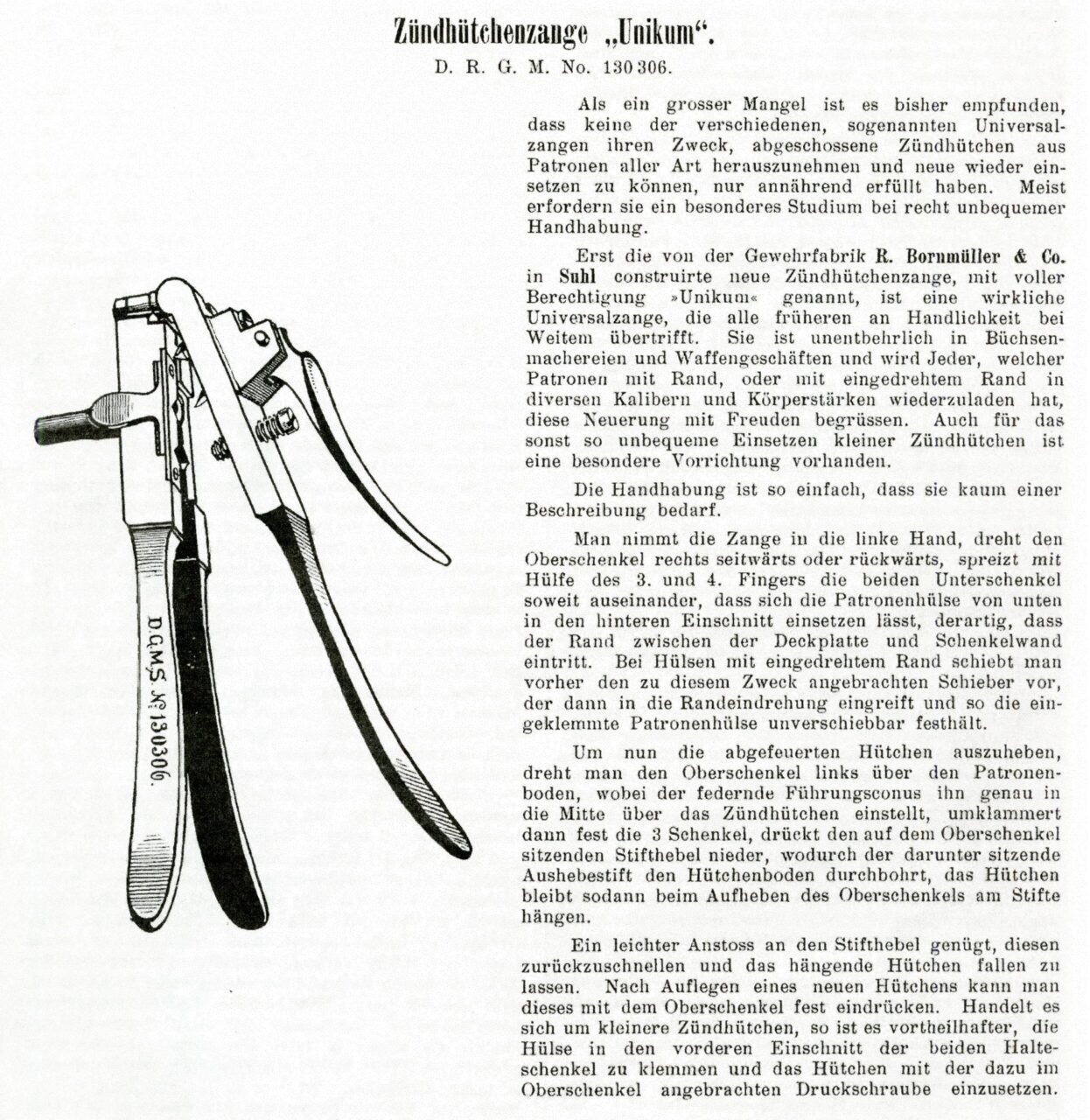By Larry B. Schuknecht
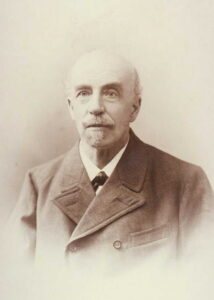
The following history of the Bornmüller family is taken from the book Heimat der Büchsenmacher by Hans-Jürgen Fritze with additional material from Ancestry.com.
The earliest records of the Bornmüller family in Suhl go back to Sept. 9, 1638 when Matthias Bornmüller and Anna Dittmar were married in Friedrichroda. They had a son- Heinrich who was born in 1640 and Matthias died on July 6, 1657. Heinrich became a weaver and settled in Suhl which was about 40 Kilomaters from Friedrichroda and married the weaver’s daughter- Dorothea Krämer in 1668. Heinrich and Dorothea began a family tradition of weaving that would go on in Suhl for six generations. It is unknown where the water power weaving mill was located but it is recorded that the Bornmüller family prospered and held important positions in and contributed to the community. The seventh generation of the Bornmüllers which were born between 1787 and 1818 began to diversify and took up work as Doctor, Judicial Officer, Cashier, Merchant, Pastor and Lawyer. The eighth generation held the occupations of Pharmacist, Forest Master, Gun Manufacturer, Sea Captain, Doll Manufacturer and Publisher of a periodical on Gun making.
The tradition of gun making in the Bornmüller family is first recorded in 1753 when the widow Maria Bornmüller lost the work shop of the independent gunsmith Bornmüller in the great fire of 1753 which consumed a large portion of the city of Suhl. The next mention of a Bornmüller gunsmith is when the gunsmith Karl Rudolf Bornmüller emigrated to America in 1864. By the middle of the 19th Century gun making was becoming the prominent and profitable occupation in Suhl.
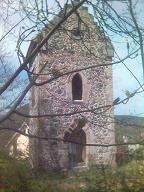
Edmond Richard Bornmüller, the subject of this web page was born on Sept. 11, 1844 to Edmond Bornmüller (1818-1853) and Anna Wilhelmine Knauth (1818-1857). Edmond Senior’s occupation is not known but it is recorded that he was a romantic who created a Bornmüller Crest, recorded the origin and history of the Bornmüller family and in 1847/48 built a stone garden house/tower known as “Bornmüller’s Turm” where he housed a collection of ancient armament that he had assembled.
Edmond and Anna had their home at Herrengasse 48 which later became Herrenstrasse 16 and upon Edmond’s death this home passed to his three sons- Richard, Max and Hilmar. It is believed that Edmond Sr. accidently shot himself while cleaning one of his guns. His three sons were underage after their mother died in 1857 were brought up by the Halle Frank Foundation.
Edmond Richard Jr. who we will refer to as Richard from here on, (he evidently never used the Edmond surname) began an apprenticeship as a gunsmith in 1860 at a time when the trade was transitioning from hand to machine work. After he completed his apprenticeship he set out on his Wandershaft to Liège and Paris to expand his knowledge and skills. Around 1868 he returned to Suhl and founded his gun making business and identified it as the successor to the Cramer & Baumgarten rifle factory which was founded in 1857. Around 1870 set up a rifle factory in a multi level building on the rear of the family property at Herrengasse 48. While in Paris Richard began designing the first successful German self cocking falling block action.
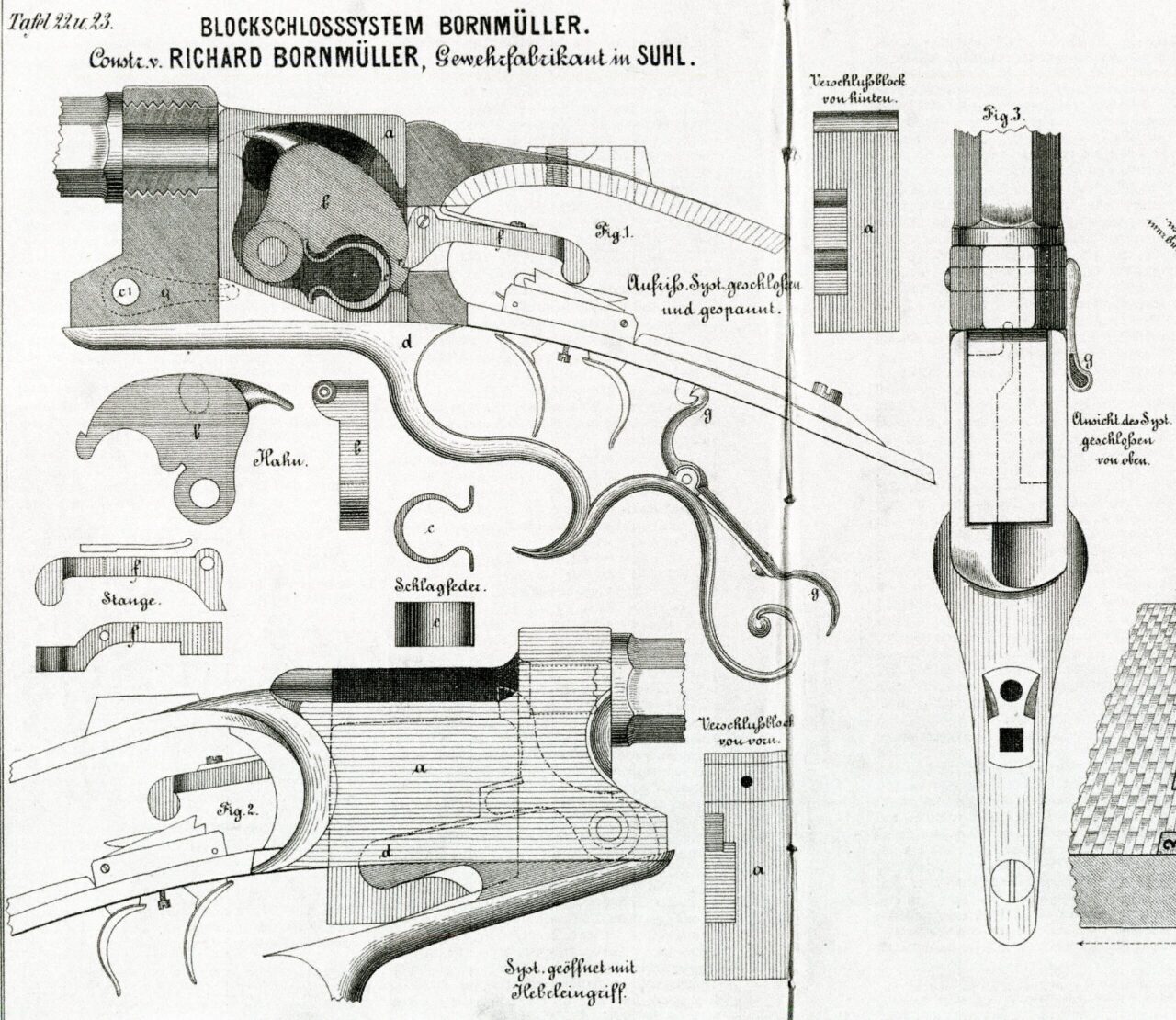
At the time Richard referred to it as the “Blockschlosssystem-Bornmüller”. Many features of this action will be found in other systems developed over the next 75 years by other gun makers. Initially it was used in making the Target rifles used in the Schuetzen matches. Later the basic design with a few changes would be used to build both Schuetzen and Pirschbuchsen rifles by Hilmar Stötzer and Max Lepper and it was referred to as the “Ideal” action.
Below are images of a Schuetzen rifle sold by the James D. Julia Auction Inc. with the “Blockschlosssystem-Bormüller “
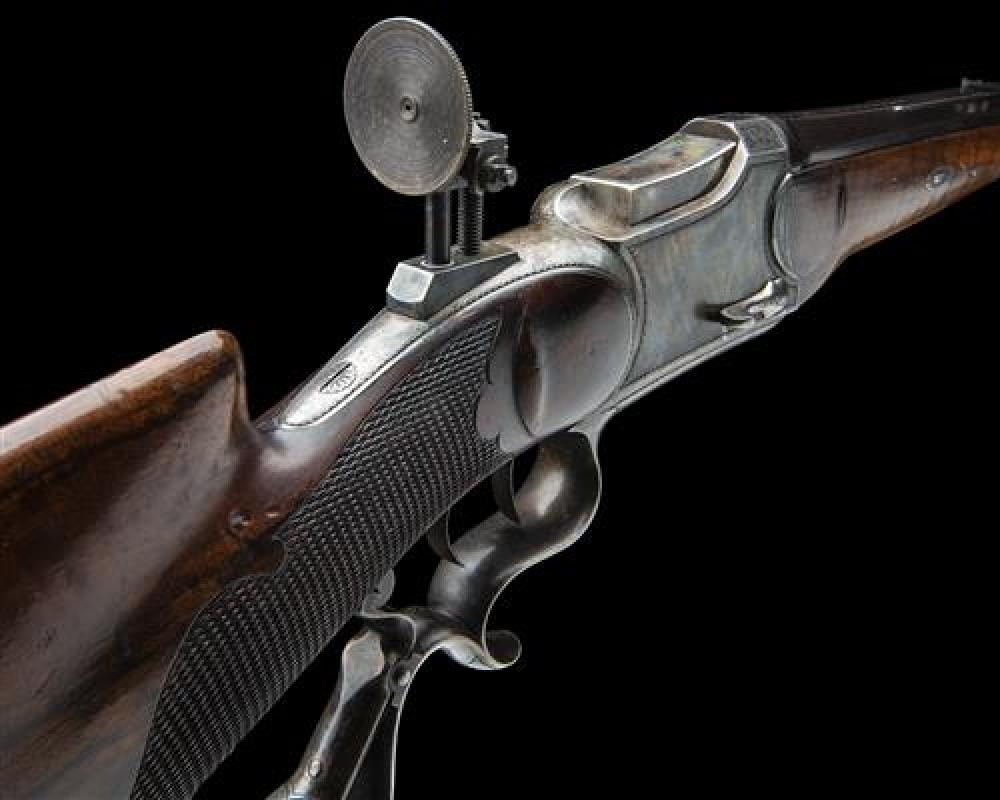
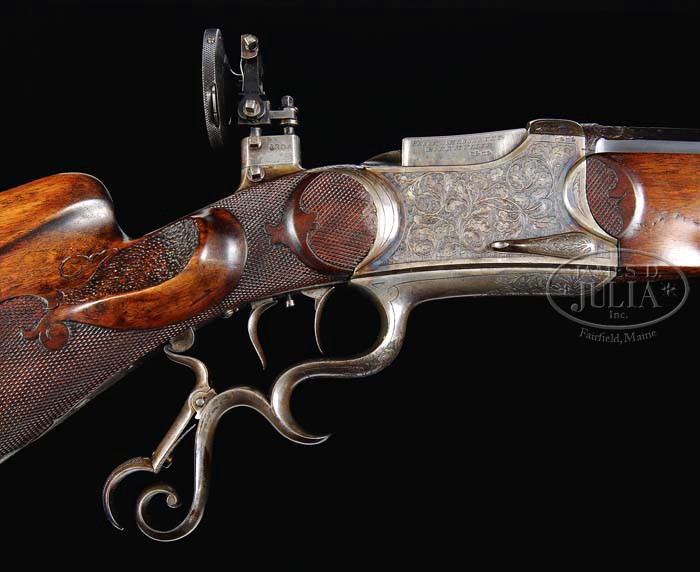
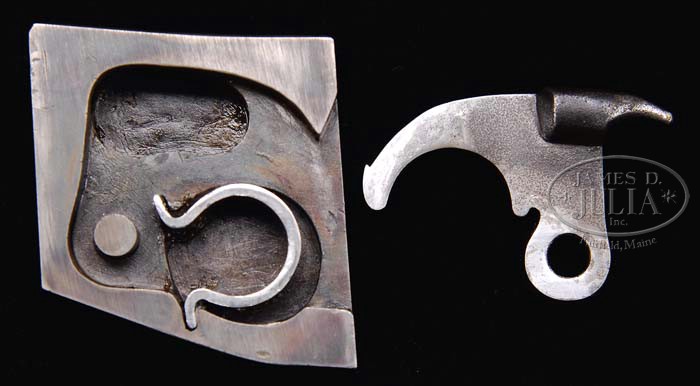
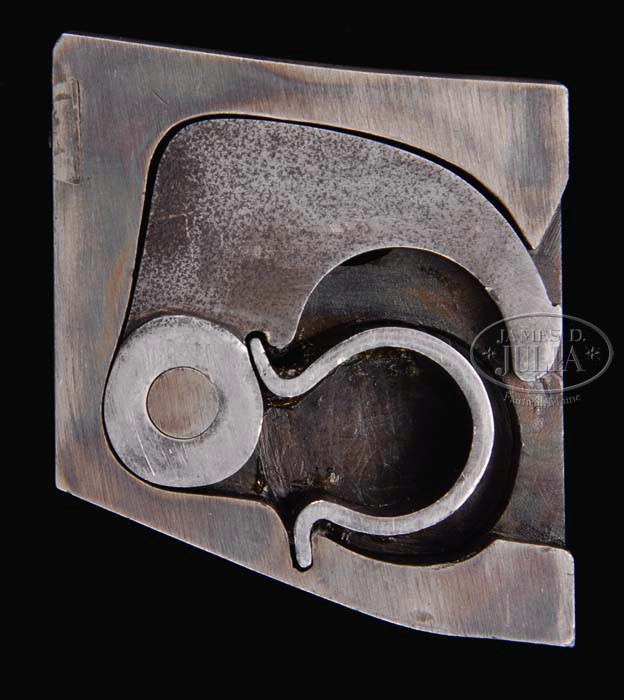
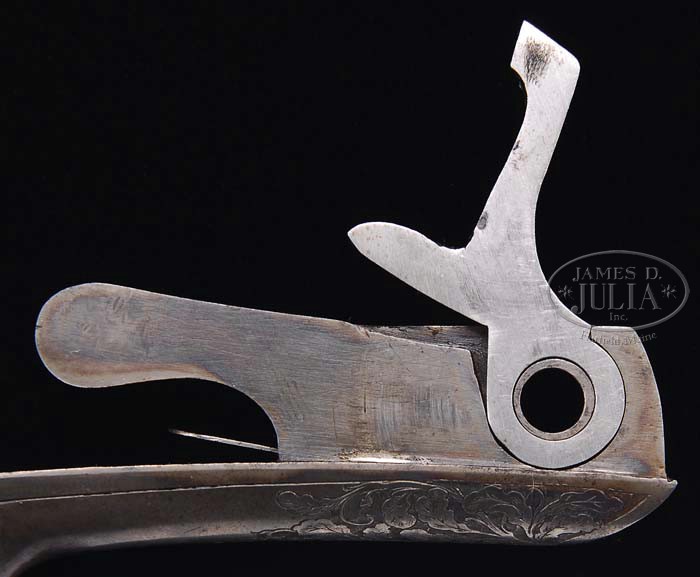

Following is an article about a Bornmüller Schuetzen rifle written by our good friend Fredrik Franzen in Sweden.
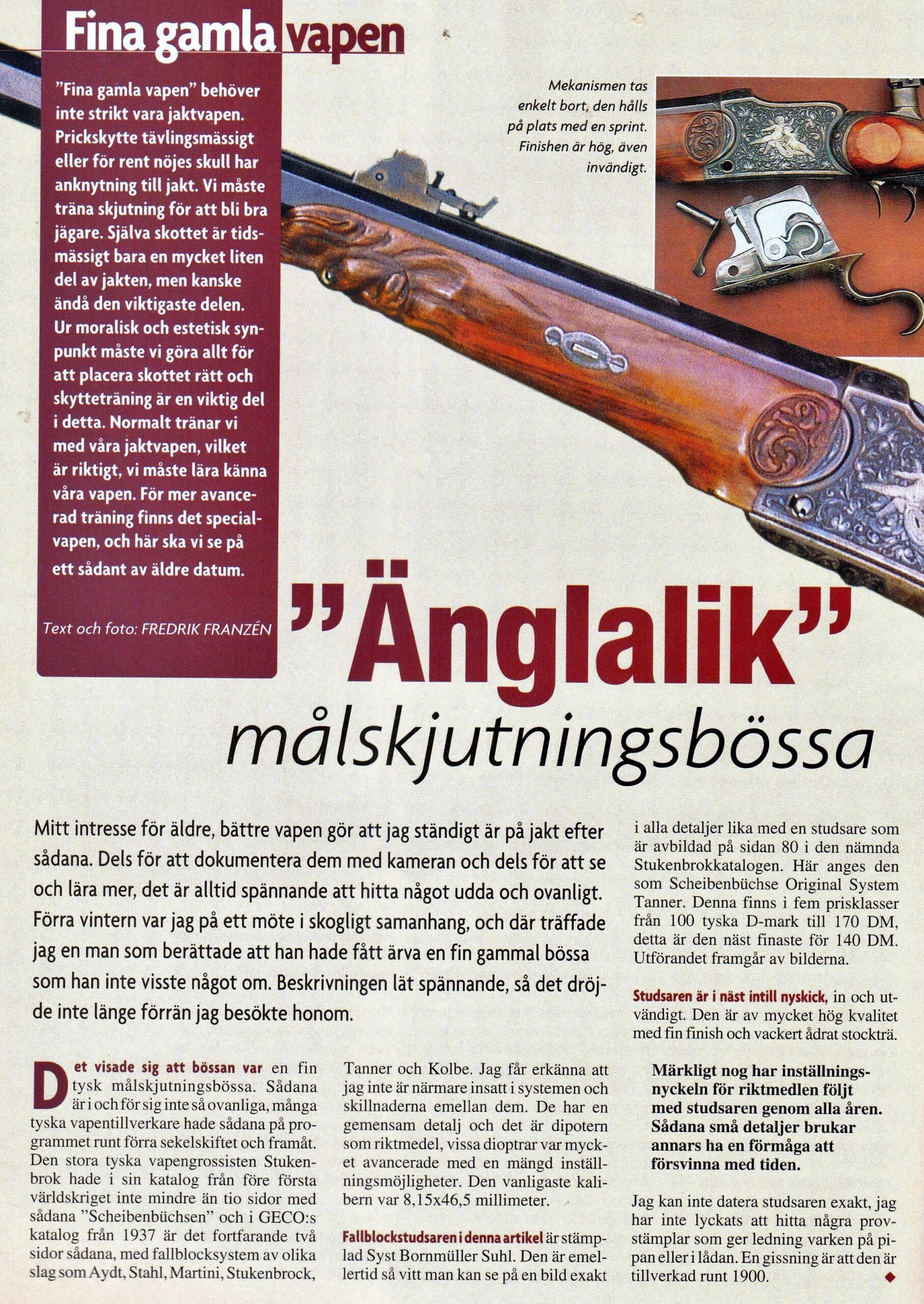
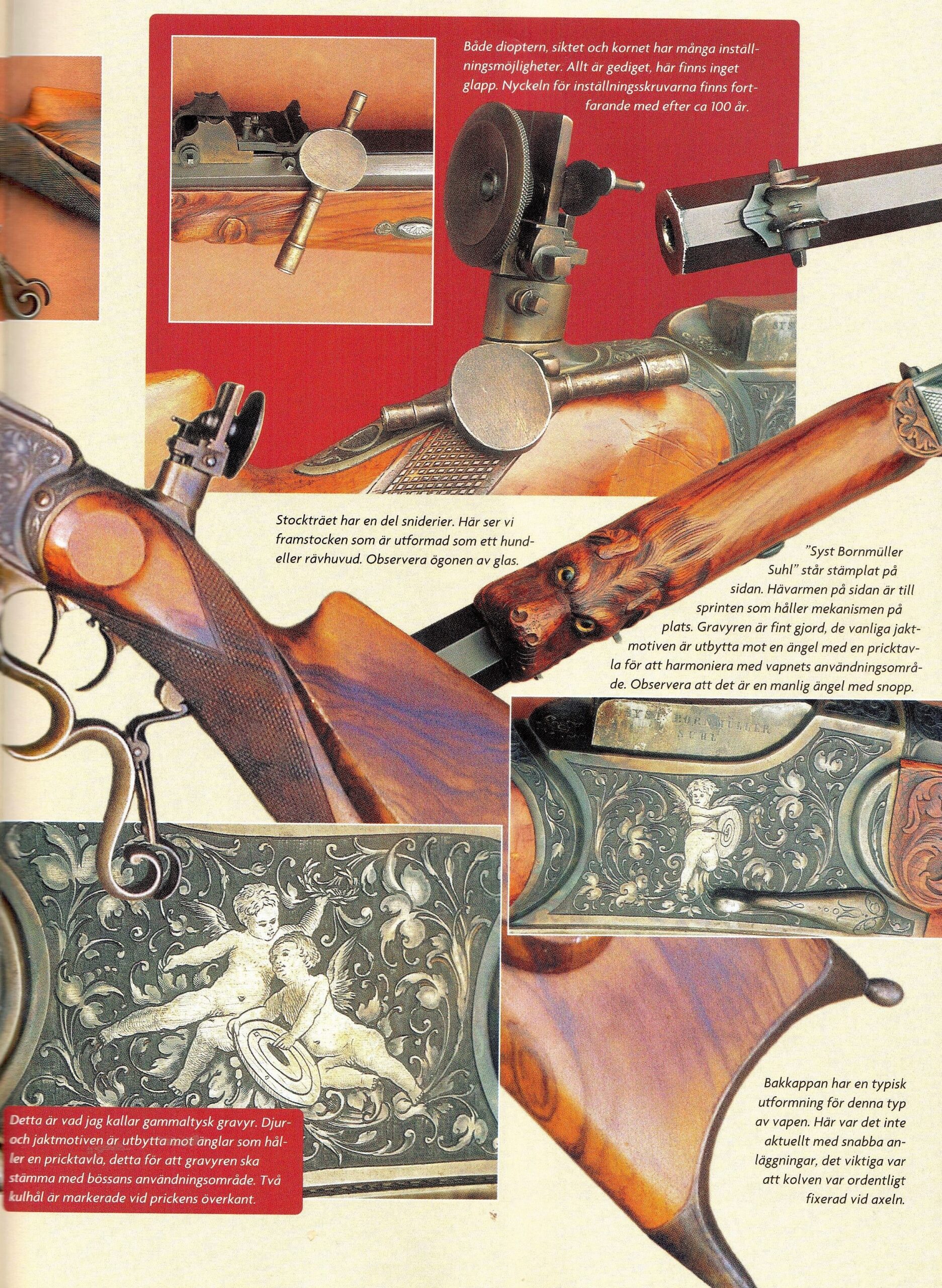

Richard also developed a System for the outside hammer Drilling which was featured in a 1888 Der Waffenschmied which follows.
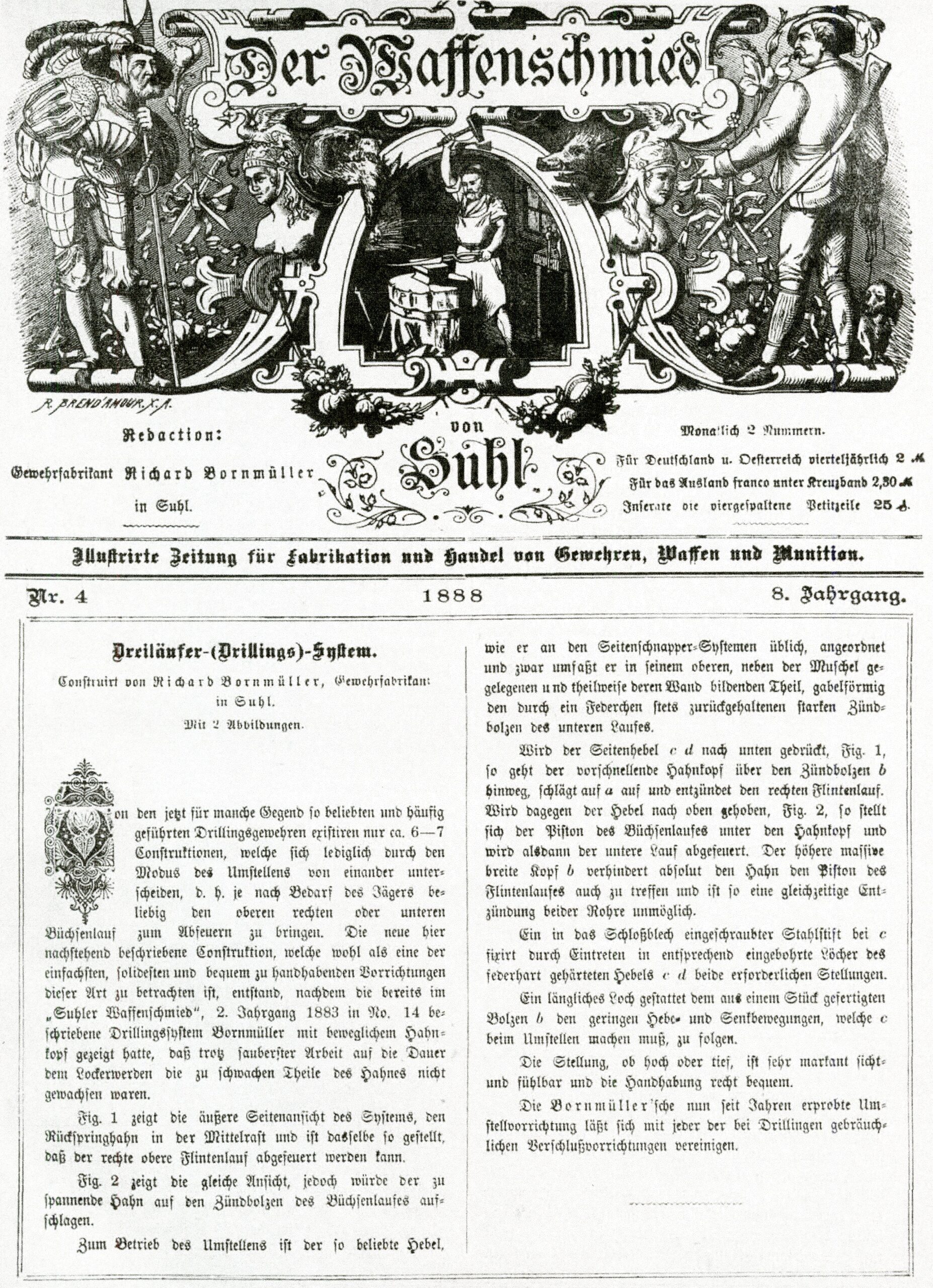
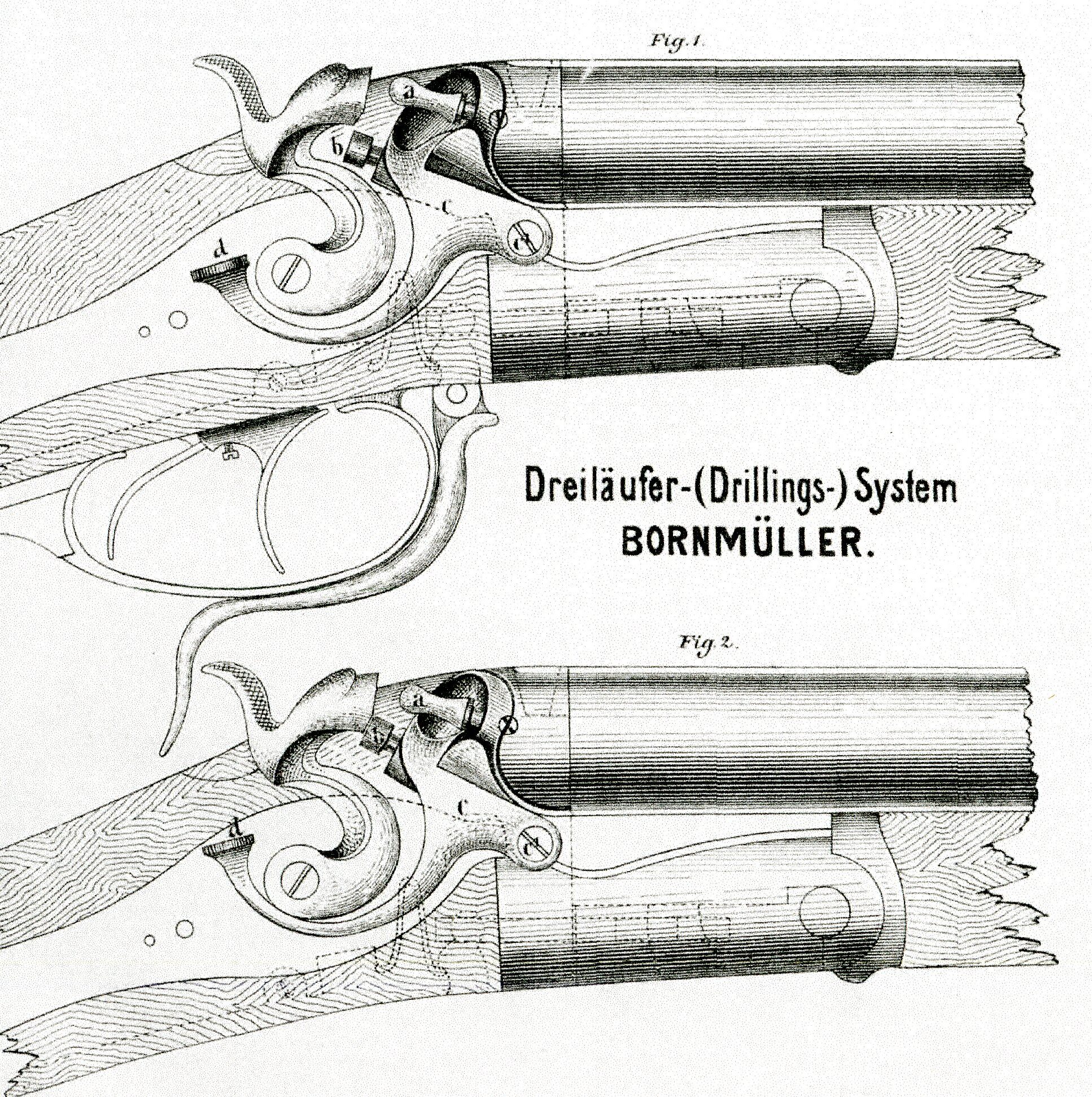
While Richard developed and perfected his single shot falling block action, he also looked at the market for mass produced military rifles and the then developing breech loading bolt actions. In 1872 he patented a “Bornmüller System” bolt action in both Germany and Belgium. Richard found both success and loss with the business and trade in Military arms. While Military arms are outside the interest of this web site, an incident that transpired in the late 1880’s greatly affected both the Bornmüller family and Company.
Richard had found that the South American country of Peru was in need of Military Weapons and a contract to produce and ship 4000 Bornmüller infantry rifles resulted. Unfortunately the ship carrying those rifles never made it to South America and was lost at sea. Richard’s insurance did not cover the loss and he and the Company had to absorb it and this forced a scale back of the Company work force, from 100 workers at it’s peak of Military production to about 25 after they concentrated on only producing sporting arms.
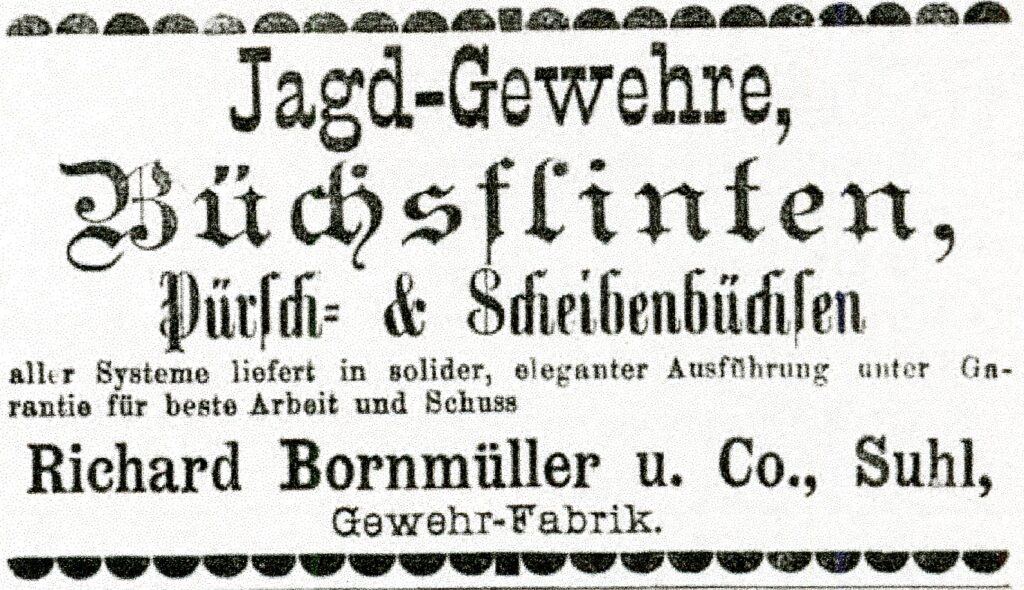
While the company was involved in manufacturing military wares, the commercial side of the business was such that an experienced person to manage it was sought. Richard selected his younger brother Hilmar (1852-1922) to do this. He had been with the company as an employee and from 1887 as a partner. in the late 1880’s and 1890’s they eventually gave up pursuing military contracts and concentrated on manufacturing sporting arms, performing repairs on arms and manufacturing Roller Skates and “Snow White” washing machines. On October 1, 1881 Richard Bornmüller introduced the new publication-Der Waffenschmied of Suhl which would be published by him continually until the end of 1894 when it became the Deutsche Waffenzietung which ran to December 25, 1909.
Leaving the subject of the Company we now look at Richard Bornmüller’s personal life. In 1886 at the age of 42 he married Adele Austen who was then 24 years old and the daughter of a Suhl District court secretary. They had two children: a daughter Elisabeth, born in 1907 who became the second wife of Major Albert von Bornmüller-Turkenfels (1834-1912) and a son-Albert. Richards younger brother- Ernst (the surname Ernst was not used) Hilmar Bornmüller took over running the company on his own after Richard passed away in April of 1908. He was civic minded and served as the fire brigade captain in 1892 and on the festive committee for the inauguration of the railway in 1884. In 1878 Hilmar married Jenny Burggraf (1857-1939) who was a third cousin. They had three sons: Edmund Hans, Walter Kurt and Karl. They initially lived at Herrengasse 48 in the late 1870’s and early 1880’s but by the time that Karl was born in 1884 they were living at Herrengasse 43. Their grandson-Hans Karl lived at Herrenstrasse 16 and from 1882 to 1913 Hilmar and Jenny lived at Herrengasse 43 which later became Herrenstrasse 26.
After Richards death the firm Richard Bornmüller & Co. continued at Herrenstrasse 26 under Hilmars leadership. In 1911 the company was reorganized as R. Bornmüller & Co. doing work as a Gun factory and a milling and turning shop. Hans-Kurt Bornmüller and Hans Hilmar Bornmüller also worked in the firearms field. In 1995 Hans Hilmar Bornmüller founded his own company-Suhler Jagdjäger-Manufaktur Hans Bornmüller GmbH & Co. (Habos).
In 1899 R. Bornmuller & Co. received a D.R.G.M. no. 113326 for a self cocking Drilling labeled the model 1900. The announcement for that from the Waffenzietung-Suhl follows.

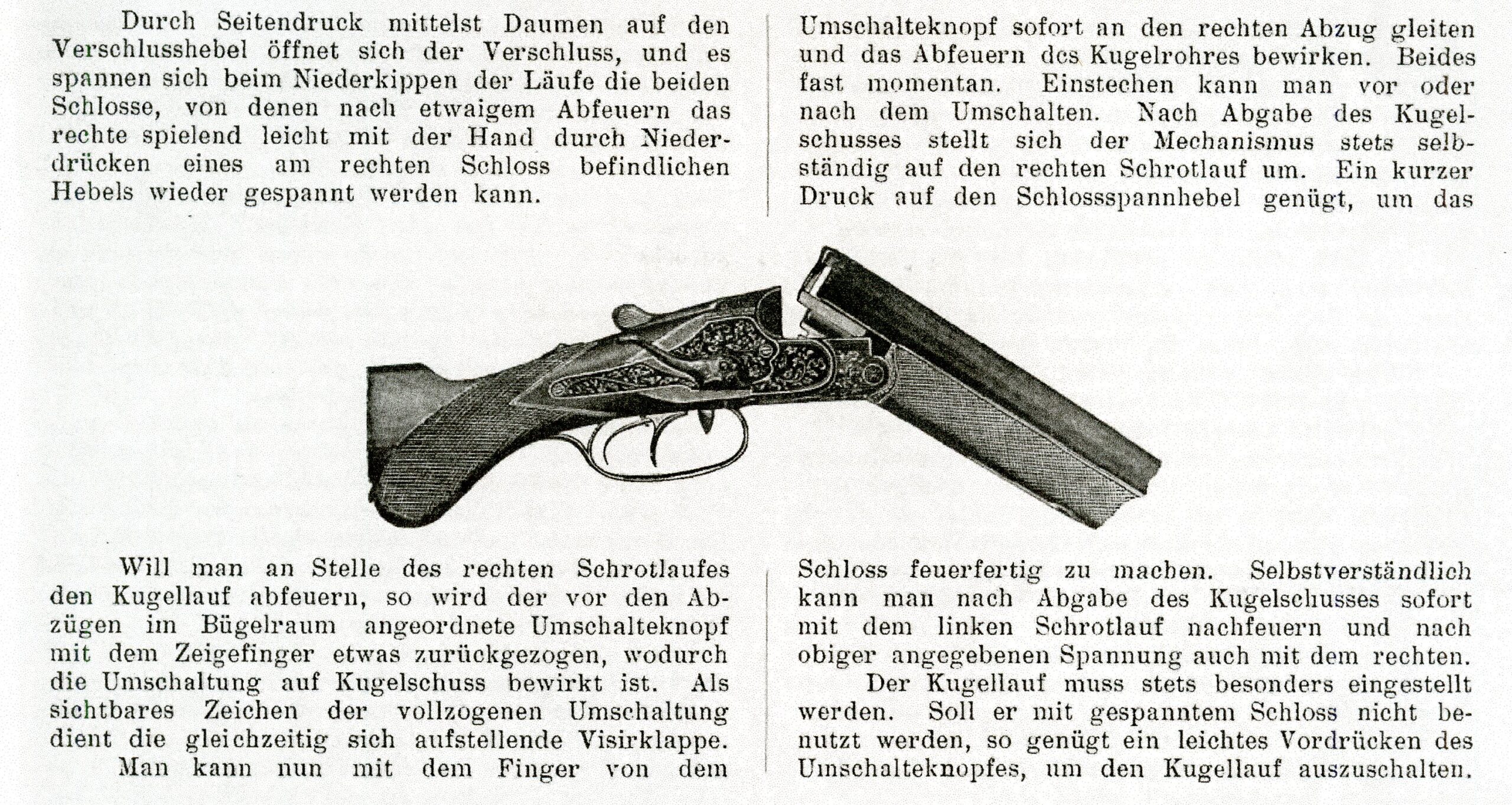
In addition to his developments and advancements of sporting and military guns, Richard also received D.R.G.M. no. 130306 in 1900 for a De & Re Priming Tool. The following article appeared in the May 22, 1900 Waffenzietung.
